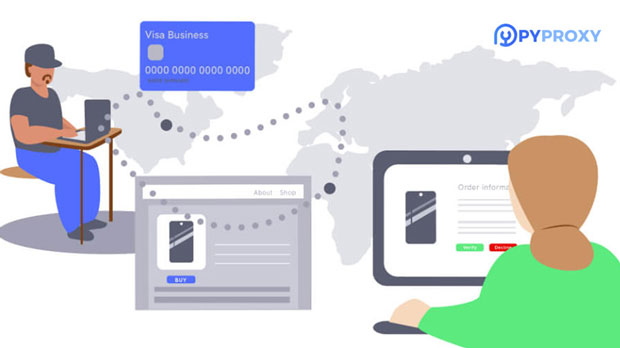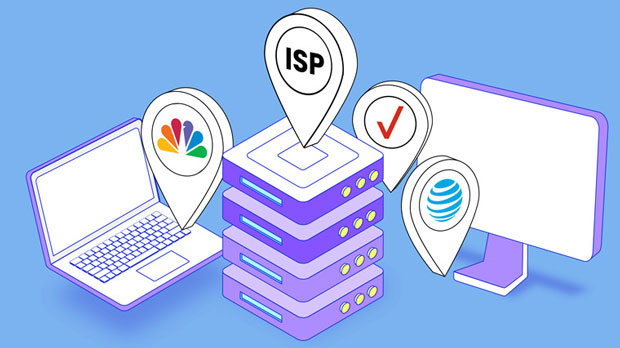In recent years, the growing need for internet security, privacy, and bypassing geographical restrictions has led to the increased use of proxy browsers. These proxies, when used in a static proxy environment, allow users to maintain consistent IP addresses over long periods of time. This stability, paired with the characteristics of proxy browsing, raises an important question: How does the speed of a proxy browser online perform in such an environment? This article aims to offer an in-depth analysis of the speed and efficiency of proxy browsers when used in static proxy environments, providing valuable insights for users and businesses considering this technology for their needs. Introduction: Understanding static proxies and Proxy BrowsersTo fully comprehend the speed performance of a proxy browser in a static proxy environment, it is essential first to understand what static proxies and proxy browsers are. Static proxies are proxies that maintain a constant IP address, in contrast to dynamic proxies that change their IP addresses frequently. This consistency makes static proxies an attractive option for users who need reliability over long periods of time.A proxy browser, on the other hand, is a browser configured to route internet traffic through a proxy server. This setup can mask the user's real IP address and make it appear as if the user is browsing from another location. When operating in a static proxy environment, the proxy browser uses the same IP address for a prolonged period, ensuring seamless browsing without constant IP address changes.Factors Affecting Speed in Static Proxy EnvironmentsSeveral factors influence the speed of a proxy browser online when used in a static proxy environment. These include:1. Network Latency and Proxy Server LocationThe physical distance between the user and the proxy server is one of the key factors determining the browsing speed. If the proxy server is located far away from the user, latency will be higher, leading to slower internet speeds. Ideally, users should choose proxy servers that are geographically close to them to minimize latency.2. Proxy Server Load and BandwidthThe performance of a proxy server can vary depending on how many users are connected to it at any given time. When a proxy server is overloaded, the available bandwidth for each user is reduced, resulting in slower browsing speeds. To achieve optimal speed, it is important to choose a proxy provider that offers dedicated servers with sufficient bandwidth to support high traffic volumes without compromising performance.3. The Quality of the Proxy BrowserNot all proxy browsers are created equal. The browser's architecture and its ability to handle proxy requests efficiently play a significant role in speed performance. For instance, modern proxy browsers are optimized to work with various proxy protocols, offering better handling of encryption and proxy tunneling. Choosing a high-quality proxy browser that is designed to work efficiently in a static proxy environment is critical for maintaining speed and performance.4. Encryption and Security ProtocolsMany users opt for secure proxy servers that encrypt traffic to ensure their data remains private. While encryption is crucial for privacy, it can also introduce some overhead, potentially slowing down the connection. The more robust the encryption protocol (such as SSL or HTTPS), the greater the impact on speed. It's a balancing act: higher security can lead to slower speeds, while lower security may compromise user privacy.Speed Test Results: Static Proxy vs Dynamic ProxySeveral speed tests have shown that static proxies, although slower than direct internet connections, tend to provide more stable and consistent speeds compared to dynamic proxies. This is because static proxies avoid the fluctuation in performance that comes with changing IP addresses. Users connecting through dynamic proxies often experience interruptions or speed drops when their IP addresses change, while static proxies maintain a steady connection.However, the difference in speed between static and dynamic proxies is not always significant. The specific environment in which the proxy is used, such as the user's internet connection quality, the load on the proxy server, and the distance to the server, can all influence the final browsing speed. While static proxies are preferable for long-term use due to their stability, users should be aware that they may not offer the same high speeds as direct connections or specialized high-speed proxies.How Static Proxy Environments Enhance User ExperienceWhile the speed of a proxy browser in a static proxy environment may not always match that of a direct connection, several advantages make static proxies highly beneficial for certain use cases. Here are a few scenarios where static proxies excel:1. Reliable GeolocationStatic proxies are ideal for businesses or individuals who need to maintain a consistent geolocation for accessing region-specific content. For example, streaming platforms and e-commerce websites often offer different content depending on the user’s location. By using a static proxy, users can bypass location restrictions and access content available only in certain regions, all while maintaining a stable IP address for the duration of their browsing session.2. Reduced IP Bans and CAPTCHAsIn many cases, websites and services impose restrictions on users who repeatedly access their platforms from the same IP address. Static proxies help users avoid this issue by keeping the same IP address over time, reducing the chances of being blocked or forced to solve CAPTCHAs. This feature is particularly useful for web scraping, automation tasks, and SEO activities where frequent access is required from the same IP.3. Consistent Online PresenceFor businesses or professionals relying on an online presence, such as digital marketers or e-commerce sellers, having a consistent IP address is important for maintaining their brand reputation and credibility. Static proxies allow users to present a consistent and reliable online identity without the risk of being flagged as suspicious due to changing IPs.Challenges and Limitations of Static ProxiesDespite the advantages, static proxies do come with certain limitations that may affect the overall browsing speed and performance:1. Vulnerability to IP BlockingWhile static proxies are less likely to face issues related to changing IP addresses, they are still vulnerable to IP blocking if the same IP address is used for an extended period of time. Websites may detect a large volume of traffic from the same IP and flag it as suspicious, resulting in slower speeds or even complete blockage.2. Limited ScalabilityAs businesses or users scale their operations, they may need to manage a larger number of proxy connections. Static proxies, which assign a fixed IP, may not scale well when a large volume of users is involved. In such cases, dynamic proxies or rotating proxy solutions may be more suitable.Conclusion: Evaluating Proxy Browser Speed in Static EnvironmentsIn conclusion, the performance of a proxy browser in a static proxy environment is a balancing act between speed, security, and reliability. While static proxies generally provide more consistent and stable speeds than dynamic proxies, the actual performance can be influenced by a variety of factors, including network latency, proxy server load, and encryption protocols. For users and businesses requiring long-term, stable access to websites or services, static proxies offer a reliable solution, although they may not provide the lightning-fast speeds seen in direct connections. By carefully selecting high-quality proxy browsers and servers, users can optimize their experience in a static proxy environment and reap the benefits of enhanced security, privacy, and geolocation control.
Sep 10, 2025



































































